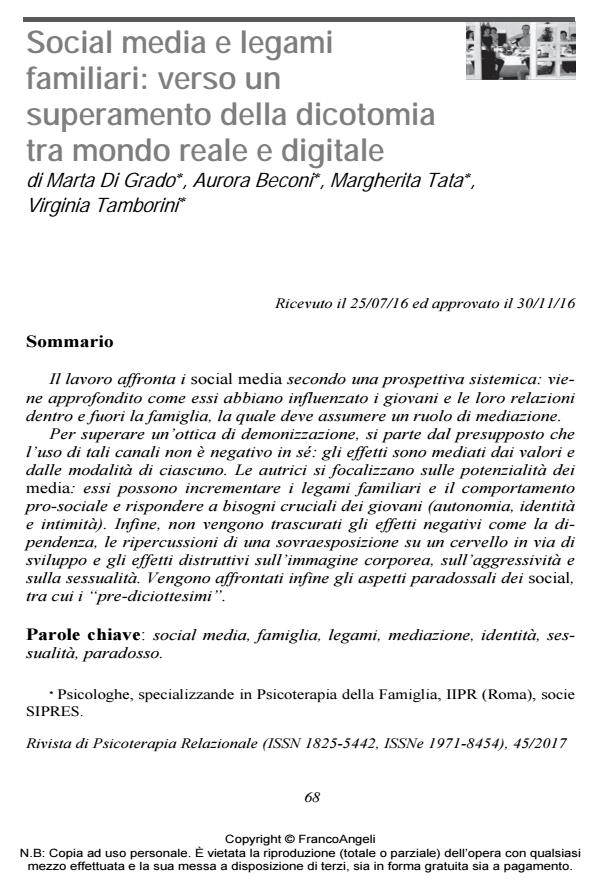Social media and family bonds: towards overcoming the dichotomy between real and digital world
Journal title RIVISTA DI PSICOTERAPIA RELAZIONALE
Author/s Marta Di Grado, Aurora Boison, Margherita Tata, Virginia Tamborini
Publishing Year 2017 Issue 2017/45
Language Italian Pages 14 P. 68-81 File size 189 KB
DOI 10.3280/PR2017-045004
DOI is like a bar code for intellectual property: to have more infomation
click here
Below, you can see the article first page
If you want to buy this article in PDF format, you can do it, following the instructions to buy download credits

FrancoAngeli is member of Publishers International Linking Association, Inc (PILA), a not-for-profit association which run the CrossRef service enabling links to and from online scholarly content.
The work deals with social media according to a systemic perspective: it is examined how they have influenced young people and their relationships inside and outside the family, which has to engage in a mediation role. To overcome a demonization perspective, it is assumed that the use of these channels is not negative itself: the effects are mediated by values and modalities of each one. The authors focus on the potential of the media: they can increase family connection and pro-social behavior and respond to critical needs of young people (autonomy, identity and intimacy). Finally, negative effects are not ignored, as the dependence, the repercussions of the overexposure for a developing brain and the destructive effects on body image, sexuality and aggression. Finally the paradoxical aspects of social media are discussed, including the "pre-eighteenth".
Keywords: Social media, family, bonds, mediation, identity, sexuality, paradox.
Marta Di Grado, Aurora Boison, Margherita Tata, Virginia Tamborini, Social media e legami familiari: verso un superamento della dicotomia tra mondo reale e digitale in "RIVISTA DI PSICOTERAPIA RELAZIONALE " 45/2017, pp 68-81, DOI: 10.3280/PR2017-045004